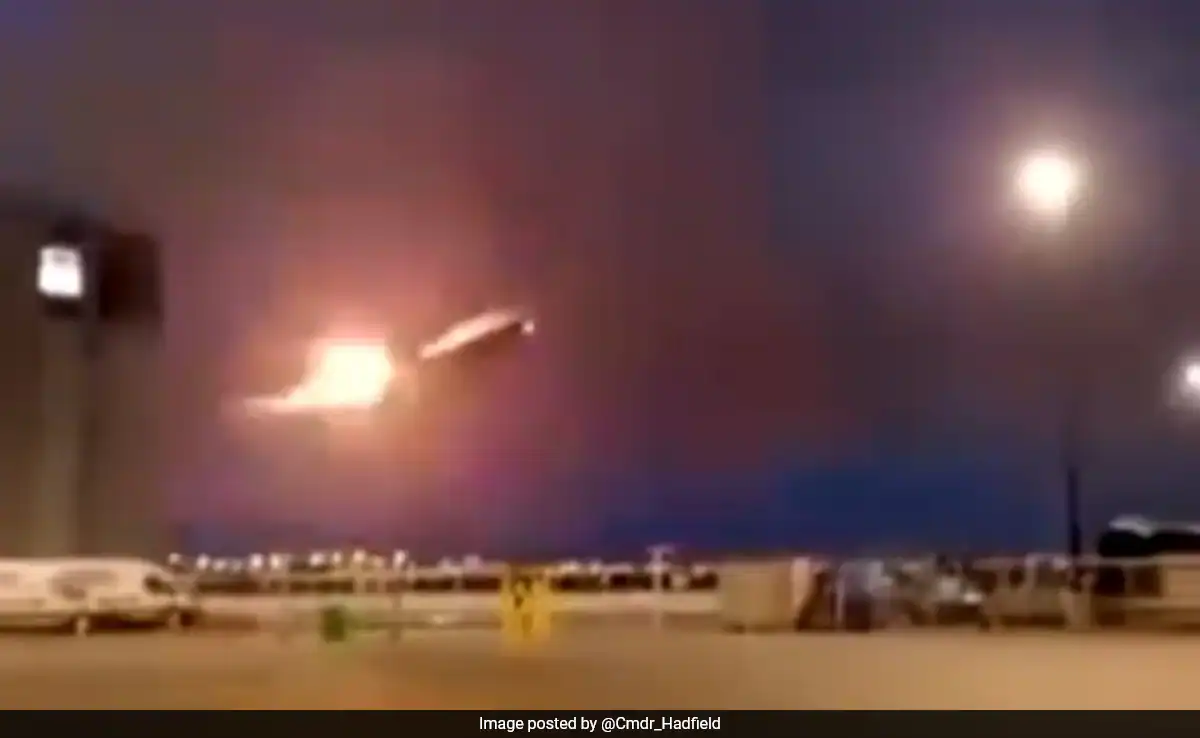In a dramatic turn of events that tested the mettle of all involved, an Air Canada Boeing 777 narrowly escaped disaster just minutes after taking off from Toronto Pearson International Airport on June 5, 2024. The incident, which has captivated the aviation community and the public alike, underscores the critical importance of skilled pilots and rapid emergency response in ensuring passenger safety.
The ill-fated flight, designated as AC872, was embarking on a routine journey from Toronto to Paris. The aircraft, a wide-body Boeing 777, was carrying 389 passengers and 13 crew members. At 12:17 am local time, the plane roared down the runway, loaded with fuel and anticipation for its transatlantic voyage. However, the excitement of takeoff quickly turned into a harrowing emergency as a serious issue emerged with the aircraft’s right engine.
Barely 22 minutes into the flight, as the Boeing 777 was climbing away from the runway, sparks and flames were observed emanating from the right engine. The initial burst of fire was captured on camera by ground witnesses, offering a chilling glimpse into the severity of the situation. The aircraft’s crew, recognizing the gravity of the situation, promptly declared a “PAN-PAN” distress signal—a standard international alert indicating a potential need for assistance.
The distress signal triggered a swift and coordinated response. Air traffic controllers, well-versed in managing high-stress situations, immediately informed the flight crew of the engine fire. Despite the daunting circumstances—including heavy fuel loads and tumultuous weather with thunderstorms and low cloud cover—the pilots maintained their composure. Their calm, decisive actions were crucial in managing the crisis.
As the plane ascended, the pilots faced a rapidly evolving situation. They maneuvered the aircraft back towards Toronto Pearson International Airport, navigating through adverse weather conditions and remaining vigilant against further complications. At approximately 1,000 feet above the ground, the crew was alerted to smoke and fire, yet they continued their ascent with precision before stabilizing the flight at 3,000 feet.
The emergency landing was executed with remarkable skill. The aircraft, under the watchful eye of air traffic controllers and emergency response teams, was cleared to land on Runway 23. Fire and rescue vehicles were positioned on standby, prepared to assist in any way necessary. The landing, while tense, was carried out successfully. The Boeing 777 touched down safely at 12:43 am, a mere 26 minutes after the initial takeoff. Within four minutes of landing, the aircraft taxied to the gate under its own power, with no injuries reported among the passengers and crew.
The swift and effective handling of the situation was lauded by many, including astronaut and former commander Chris Hadfield, who praised the pilots and air traffic controllers for their exemplary performance. Hadfield, known for his insightful commentary on space and aviation, shared a video reconstruction of the incident, highlighting the professionalism and calm under pressure exhibited by all involved.
Air Canada subsequently released a statement detailing the cause of the incident. According to the airline, the fire resulted from a stalled compressor in the right engine. Following the incident, the aircraft was inspected by airport response vehicles and subsequently taken out of service for a thorough evaluation by the airline’s maintenance and engineering teams.
Passengers, who had been accommodated on a different aircraft, were eventually able to resume their journey to Paris later that evening. The rescheduled flight departed at 1:32 am on June 6, 2024.
This incident is part of a concerning trend involving Boeing aircraft, with several recent engine-related issues drawing attention. Nonetheless, the extraordinary response by the flight crew and the seamless coordination with air traffic controllers exemplify the robust safety measures in place within the aviation industry.
The near-disaster on Flight AC872 serves as a stark reminder of the high-stakes environment in which modern aviation operates. The professionalism and expertise of the pilots, coupled with the vigilant efforts of the air traffic controllers and emergency responders, ensured that what could have been a tragic event ended with everyone safe and unharmed. As investigations into the cause of the engine fire continue, the incident underscores the critical importance of safety protocols and the unwavering dedication of those who safeguard the skies.











Got a Questions?
Find us on Socials or Contact us and we’ll get back to you as soon as possible.